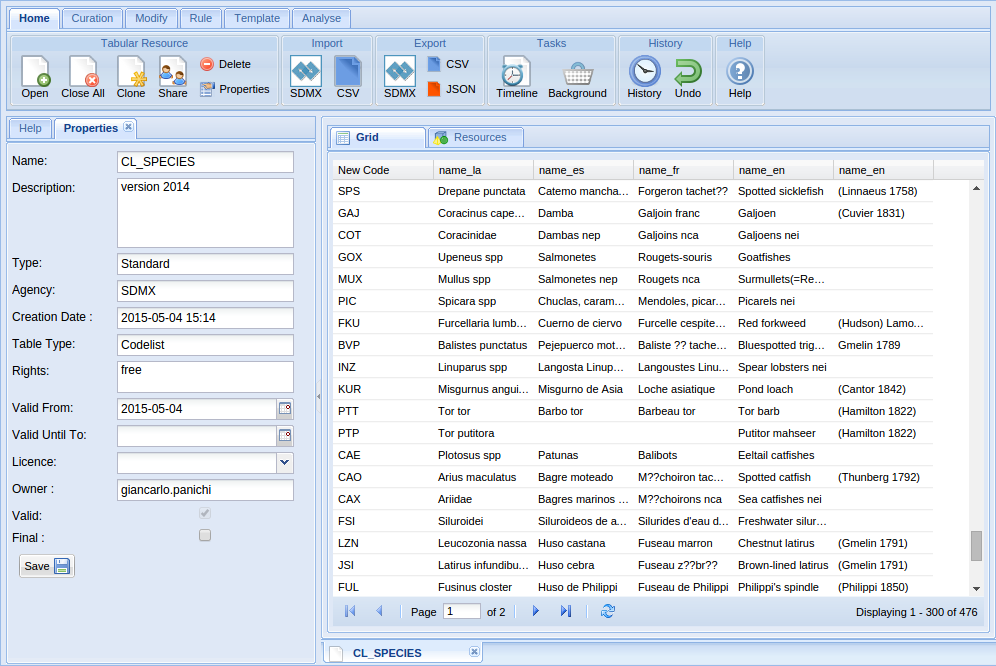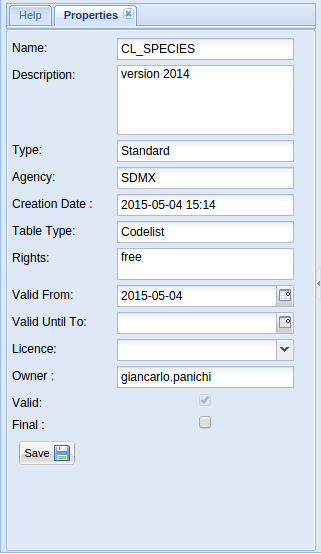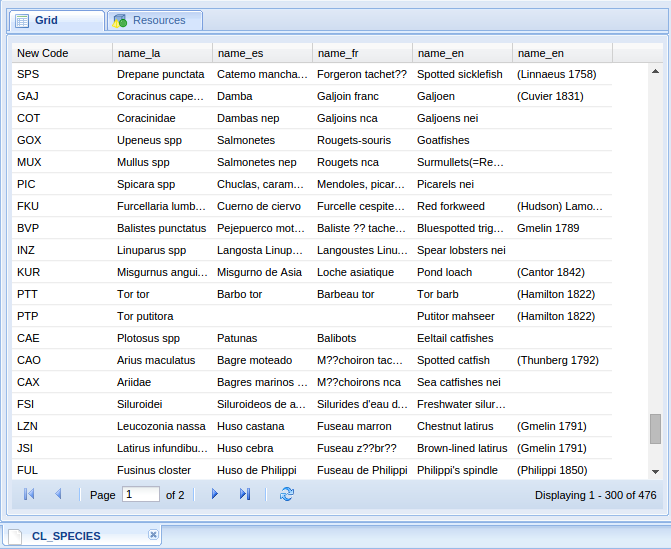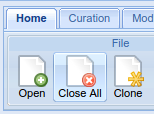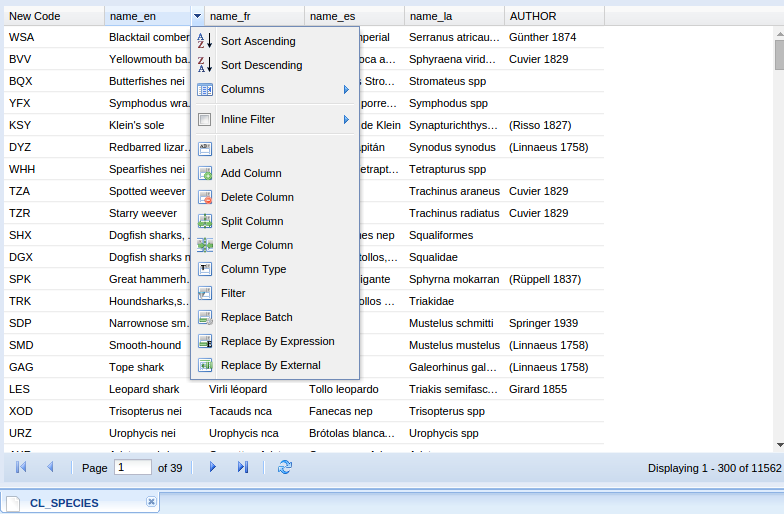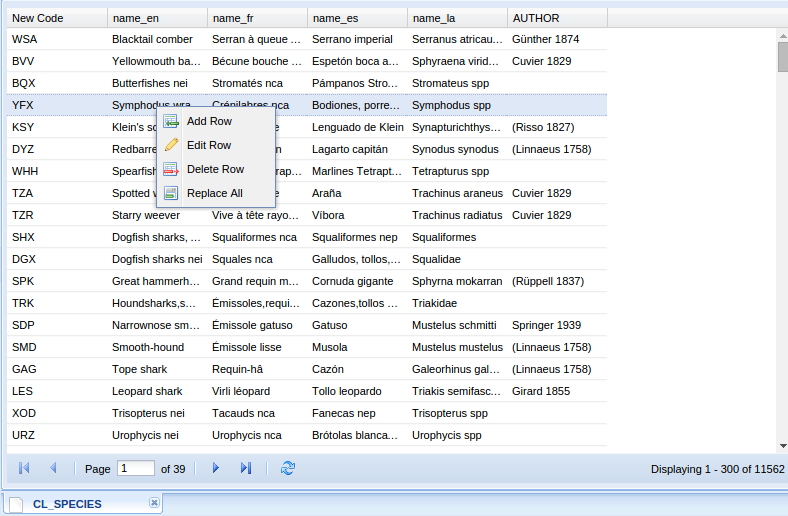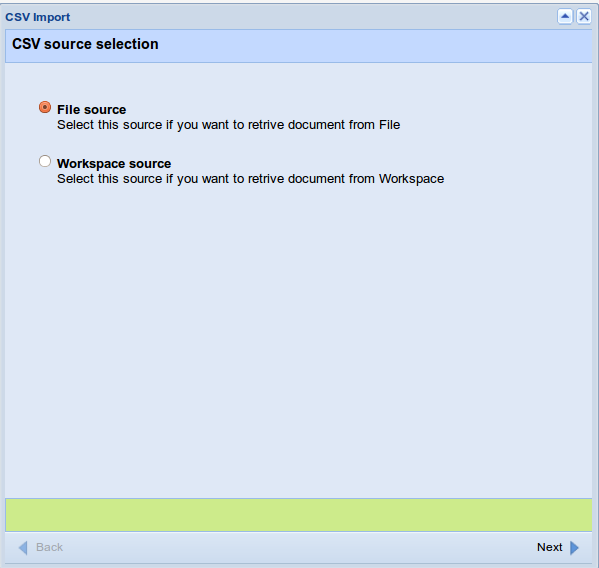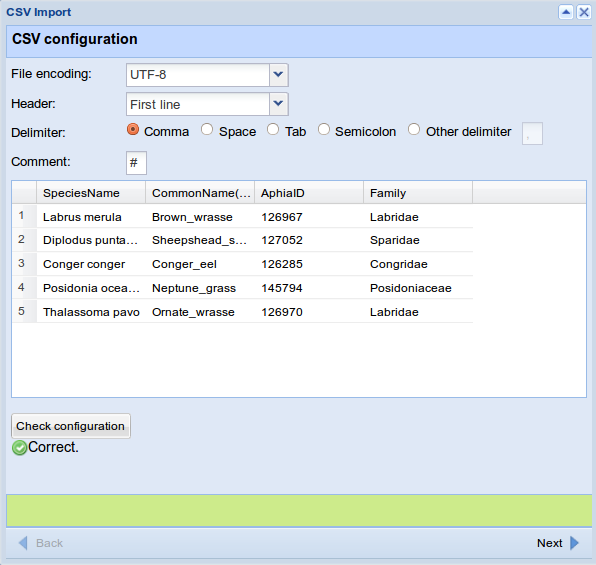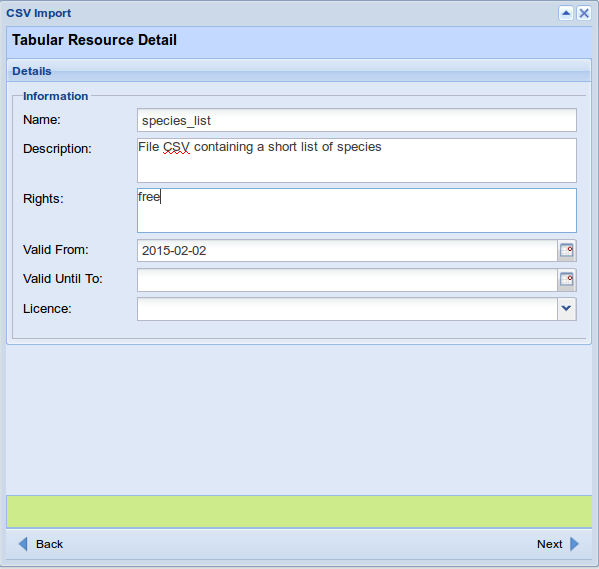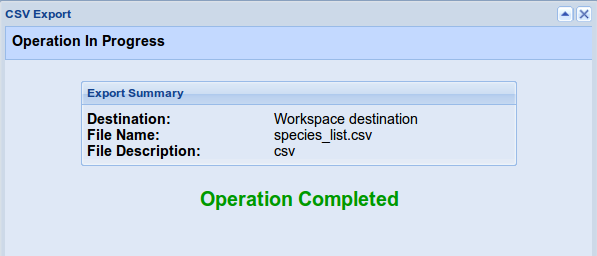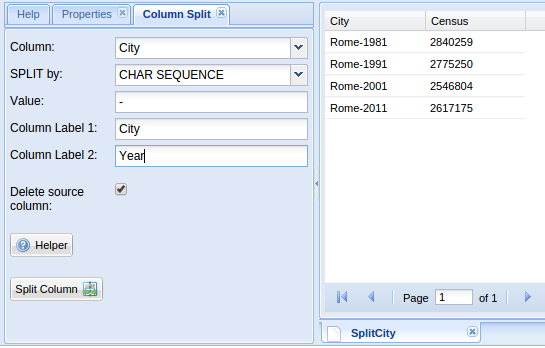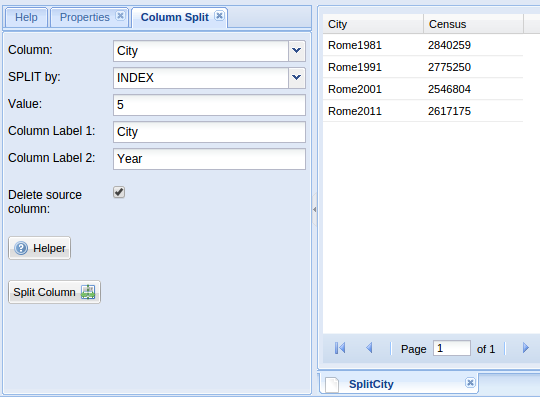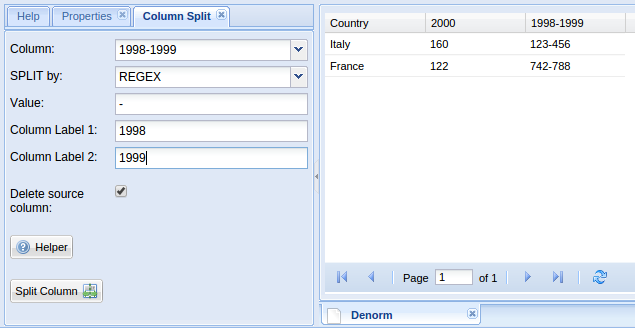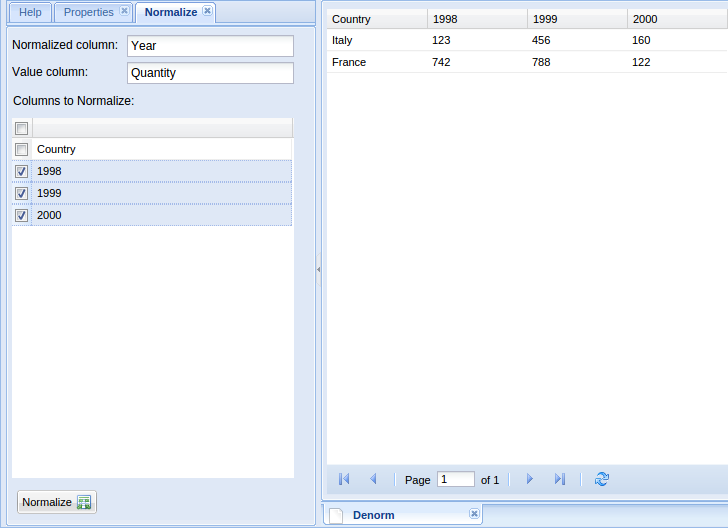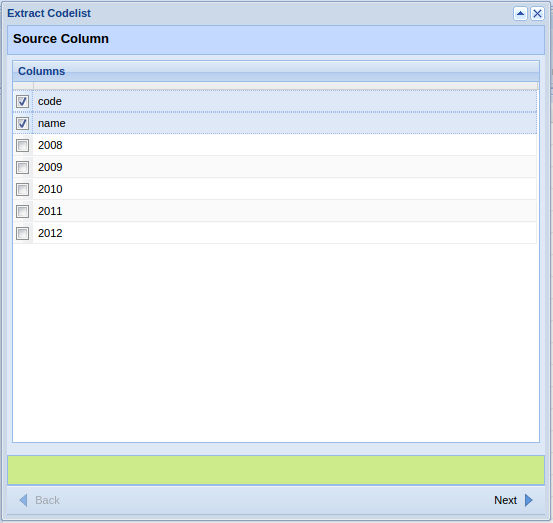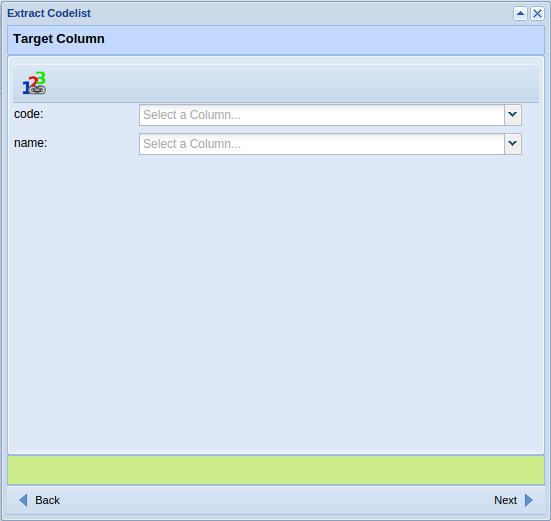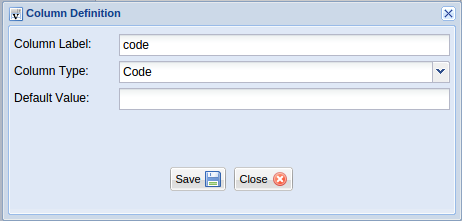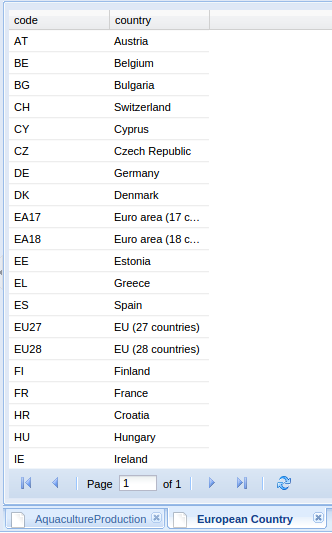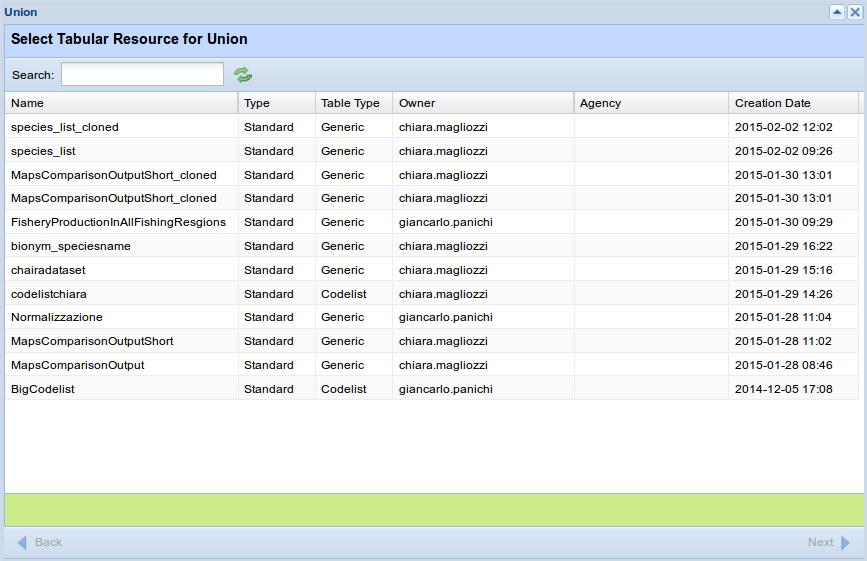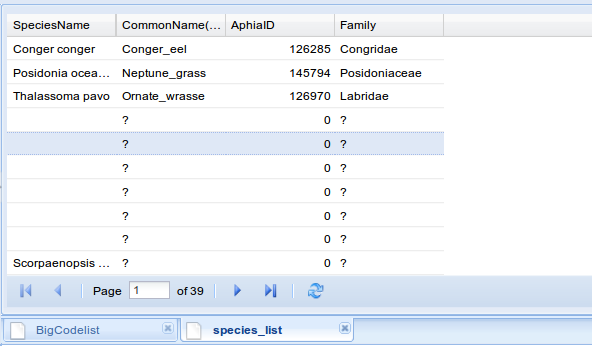Difference between revisions of "Tabular Data Manager"
(→Union) |
(→Union) |
||
| Line 213: | Line 213: | ||
Selection of the column within the table resources to unify: | Selection of the column within the table resources to unify: | ||
:[[Image:mapping.png|frame|center|Tabular Data Manager, Columns selection]] | :[[Image:mapping.png|frame|center|Tabular Data Manager, Columns selection]] | ||
| + | The original table has been transformed into: | ||
| + | :[[Image:result_union.png|frame|center|Tabular Data Manager, Table resulting from the Union function]] | ||
== Analyse == | == Analyse == | ||
Revision as of 11:02, 3 February 2015
This is the user guide to Tabular Data Manager portlet.
Overview
Tabular data manager, is a working environment which ensures the management of tabular resources such as datasets, codelist and generic tables. Different types of data can be imported into the platform and a set of operations performed to create, explore and partially manipulate your file. Tabular Resources are used in different scientific fields ranging from statistics to signal processing and econometrics. Among the available facilities of Tabular Data Manager is the possibility to check for data correctness using codelist files, to perform aggregating and filtering operations. The main strength of the platform is the management of big dataset with more than million of data without having problems in exploring and further process your file.
Basic of Interface
Composition of interface :
- Ribbon menu
- The interface consists of a top ribbon menu of four tabs (i.e Home, Curation, Modify and Analyse) including the main functionalities of the portlet.
- Tools area
- The interface has a left side panel, which describes in the tab properties, the main characteristics of the activated table. In also, you can visualize the list of the performed operations (once you have already manipulated your file) and if those have been validated (i.e validation tab).
- Main area
- In the central panel, your active tabular resource is displayed. As you can see in the picture, the bottom panel shows on which table you are working on.
Basic Operations
This section includes primary operations to open, close, delete, investigating the properties and clone your table.
Open
To open your tabular resource you need to click on the Home tab and on the Open button of the File menu. A window will appear to show the list of tabular resources already uploaded in your workspace and thus available to be viasualized
Close
A singular tabular resources can be closed directly in the bottom menu of the central panel (See Figure in Section "Main area"). You can also use the close buttom on the top of the ribbon menu, Home-> File, which allows to close all the open tables in you working environment.
Delete
It is possible to delete your table resouces using the button Delete on the File menu of the Home tab. The resource will be not anymore available into your workspace. A ppo-up window will appear to confirm the operation.
Properties
The tab properties shows the main characteristics of the activated table, for example:description, type and owner. See image in section Tools Area.
Clone
You can create one or more copies of your table using the Clone button in the File menu.
Grid Menu
A column and a context menu, are available directly on your tabuler resource. By using the column menu, which appear in each column header, you can access to the main functionalities, present in the tabs of the ribbon bar (see image in the section Column Menu). On the other hand, the right click on the cell allows to execute basic operations (see image of the section Contex Menu)
Grid Header Column Menu
Grid Context Menu
Import
CSV
Users can import their file in .csv format, by clicking on the CSV button in the Home tab.
The user can specify using a pop-up window the file source. There are two possibilities: File source, if you want to retrieve your files from your local computer or Workspace, if you want to retrieve them from your workspace.
After, several pop-up windows will appear for both file configuration and detail.
A final pop-up window will inform you when the file is successfully imported
SDMX
Export
CSV
Users can export their file in a .csv format, by clicking on the CSV button in the Export menu of the Home tab.
Using a pop-up window, the user specifies the folder into the workspace where the file will be saved. From the workspace the file can be downloaded in local.
A pop-up windows will help you to configure your file for the export.
A final pop-up window will inform you the success of the export procedure.
JSON
SDMX
Curation
Split Column
- CHAR_SEQUENCE
- Here below, an example of the application of the CHAR SEQUENCE method in the Column Split function:
- The original table is transformed into:
- INDEX
- Here below an example of the application of the INDEX method in the Column Split function:
- The original table is transformed into:
- REGEX
- Here below an example of the application of the REGEX method in the Column Split function:
- The original table is transformed into:
- N.B. Value is a POSIX Regular Expression
Normalize
If you want to normalize your Tabular resource, you can continue as follow:
Considering the structure of our table you will name a Normalized and a Value column. The system will create these two new columns at the end of the normalization. In the pop-up setting windows, the Normalized Column will be the column containing the normalized variables, whereas the Value column will contain the values of the normalized data (i.e Normalized column: 'Year', Value column:'Quantity' and columns to normalize '1998', '1999' and '2000' )
The original table is transformed into:
Denormalize
A table resource can be denormalized using the Denormalize button in the Structure menu of the Curation tab: The original table, can be transformed by selecting the Value column and the Attribute column. Using the normalized table of the previous section, by setting 'Quantity' as value column and 'Year' as attribute column we will obtain the original table:
Extract Codelist
There is the possibility to extract a codelist from Tabular resources. Let's use the table below:
Click on the Extract codelist button, in the Helper menu of the Curation tab:
Select the columns, for example 'code' and 'name':
Define the target column, for example new column:
Define the label and the type of your new column:
The target column should appear as follow:
Choose a name for the new codelist:
The original table is transformed in a new codelist:
Modify
The modify tab includes several functions in the Table menu to work on your Tabular Resources (i.e group, add, delete, unify table etc...)
Union
In the Table menu, the Union button allows to relate one or more columns of your tables resources in one file. Here below, an example of the functionality of the Union button with a tabular resources. Selection of the files:
Selection of the column within the table resources to unify:
The original table has been transformed into:
